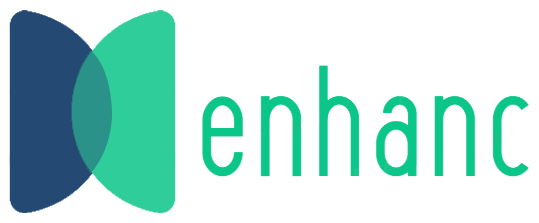5 Ways Digital Flipbooks Can Impress Your Clients

Static PDFs and conventional brochures are falling behind. Customers want richer, more interactive experiences that grab attention and present information in memorable forms. Digital flipbooks provide an innovative alternative that turns dull documents into engaging presentations.
These interactive books bring the classic page-turning familiarity of traditional books and mingle it with multimedia aspects such as videos, animations, and clickable hyperlinks. For organizations that want to take their client presentations to the next level, digital flipbooks are an improvement above traditional marketing materials.
The technology has advanced from mere page-flipping effects. New digital flipbooks are easily integrated into business processes, offer detailed analysis, and function on all devices. This makes them highly useful for firms looking to leave more impactful impressions during customer pitches, product launches, or regular communications.
-
Improved Visual Storytelling
Digital flipbooks convert static content into dynamic stories that grab attention from page one. While conventional PDFs only let you include text and basic graphics, these interactive books enable you to insert high-resolution images, videos, and animations right into the content. Such a multimedia-driven method serves to help clients visualize intricate ideas and retain major points weeks after the presentation.
Page turning animation provides a natural flow of reading that is similar to the experience of flipping through a printed magazine or catalog. The familiar interaction decreases cognitive load and maintains reader interest throughout the whole document.
Think about adding before-and-after photo sequences, product demonstrations, or client testimonials in the form of videos to your flipbook pages. These features interrupt sections of too much text and give clients several ways to ingest your message. The end result is a better overall understanding of your services or products.
-
Professional Brand Presentation
Online flipbooks raise your company’s perceived value through sophisticated, professional presentation standards. Digital flipbook software enables uniform typography, color schemes, and design layouts that reinforce your brand identity on each and every page. This degree of design control often proves difficult to accomplish with typical presentation software or simple PDF documents.
Customization possibilities include interactive items such as buttons, navigation menus, and embedded contact forms. These elements form a coherent user experience that speaks volumes about your company’s devotion to detail and attention to quality. Clients tend to associate this sort of presentation sophistication with general business acumen.
The technology also accommodates sophisticated design aspects such as transparent backgrounds, layered graphics, and personalized animations. These tools enable the development of unique presentations that are seen to differ from competitors employing traditional marketing materials. Your clients will appreciate the additional effort that goes into crafting a quality experience.
-
Interactive Engagement Features
Contemporary digital flipbooks contain interactive features that invite active engagement instead of passive consumption. Incorporating surveys, feedback questionnaires, and clickable product catalogues turns one-way presentations into two-way dialogue. This interaction builds more meaningful relationships between your content and client requirements.
Hotspots and click areas on photographs enable customers to browse products or services at their leisure. For instance, an architectural company may provide interactive floor plans where customers can click on various rooms to see detailed specs or design schemes. This autonomous investigation tends to result in more substantial discussions at subsequent meetings.
Social sharing buttons and email integration make it simple for clients to share relevant pages with colleagues or decision-makers. This viral potential extends your presentation’s reach beyond the initial meeting, potentially influencing stakeholders who weren’t present during your original pitch.
-
Analytics and Performance Insights
Online flipbooks give you in-depth analysis that shows exactly how your clients are engaging with your material. It presents to you page view time, most viewed sections, and click-throughs on links embedded in the content. All this information allows you to know which parts of your presentation strike a chord the strongest in various types of clients.
Heat mapping capabilities reveal where readers’ attention is directed on every page. This data is invaluable for optimizing presentations in the future and detecting content gaps that could confuse or disengage potential customers. You can also see if clients revisit to read specific sections, which can be signs of special interest areas.
The analytics are as far-reaching as sharing behavior, indicating when and how frequently clients share your flipbook with colleagues. This information is an early signal of purchase intent and allows you to prioritize follow-up efforts with the most active prospects. Standard printed content can never reveal this much about client behavior.
-
Accessibility and Convenience
Digital flipbooks perform flawlessly between desktop PCs, tablets, and smartphones without any additional software or apps. The compatibility across all devices assures your clients can view your presentations irrespective of the device or technical configuration they use. The responsive design automatically scales layout and navigation for ideal viewing on varying screen sizes.
Cloud hosting implies customers will have access to current versions of your presentations in real time. When you change prices, introduce new products or services, or modify contact details, you get immediate updates without resending. This real-time update ability ensures your promotional materials remain current and mitigates the confusion that usually comes with outdated printed pieces.
Password protection and expiration dates ensure security controls for confidential client information. You may generate unique access links for various prospects to ensure that proprietary information is only transmitted to intended recipients. Such control advances requirements to comply with regulatory industries while retaining professional standards of confidentiality.
Conclusion
Digital flipbooks are more than a technology advance, they are proof of your dedication to building outstanding client experiences. The blend of visual presence, interactive functionality, and precise analytics opens the door for deeper business connections.
Begin by digitizing your most critical client-facing documents in the form of online flipbooks. Prioritize items that would be improved by multimedia support or interactive properties. Track the analytics to see how various clients are interacting with your content, then adjust your strategy accordingly.
Investing in flipbook digital technology tends to prove cost-effective through better client interaction, reduced sales cycles, and better brand perception. As client expectations keep changing, companies that adopt interactive presentation forms will have competitive edges over firms depending on standard marketing printed content.
You can make your first digital flipbook using Enhanc digital flipbook software today! It now offers 14-day free trial!
